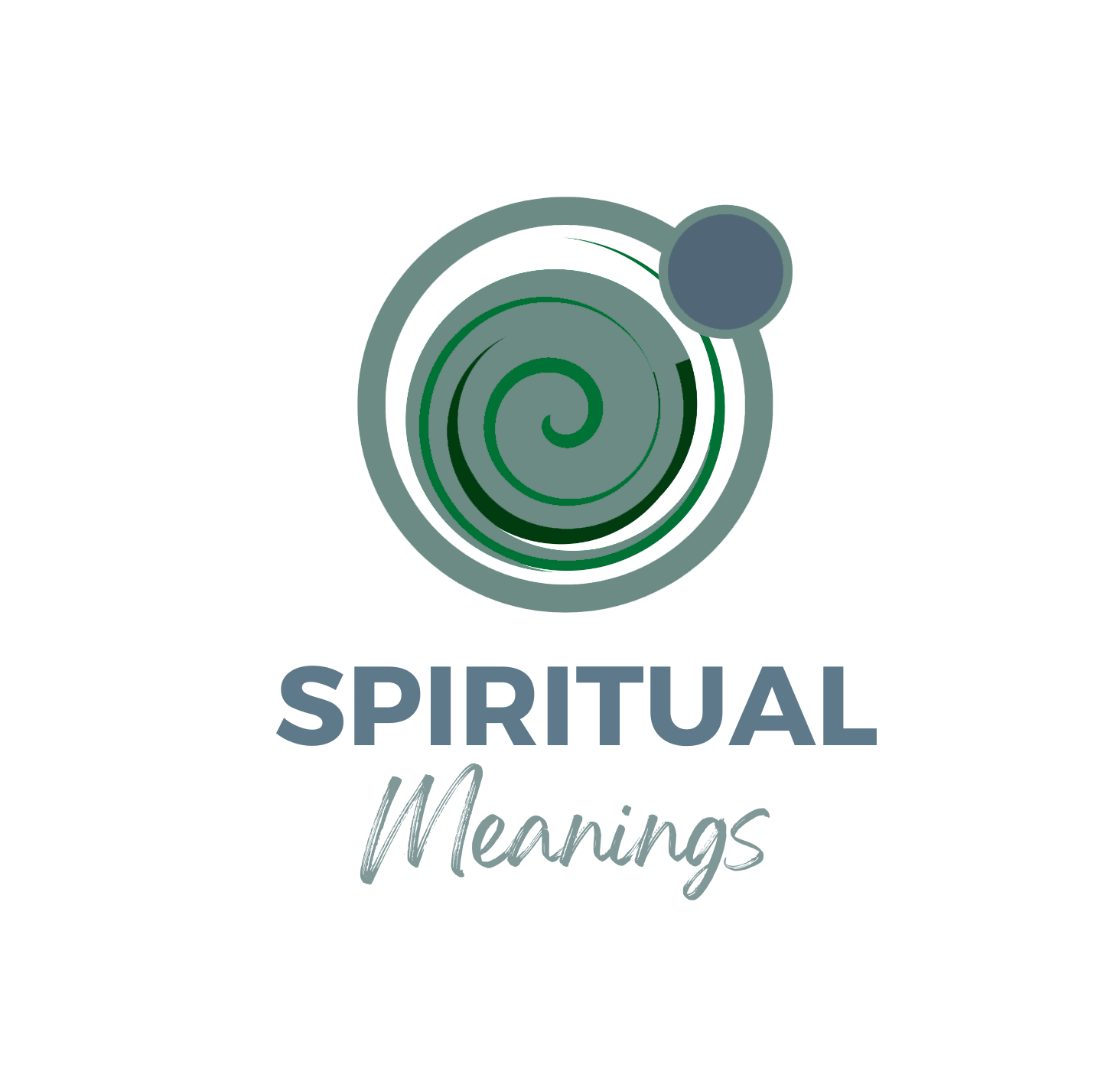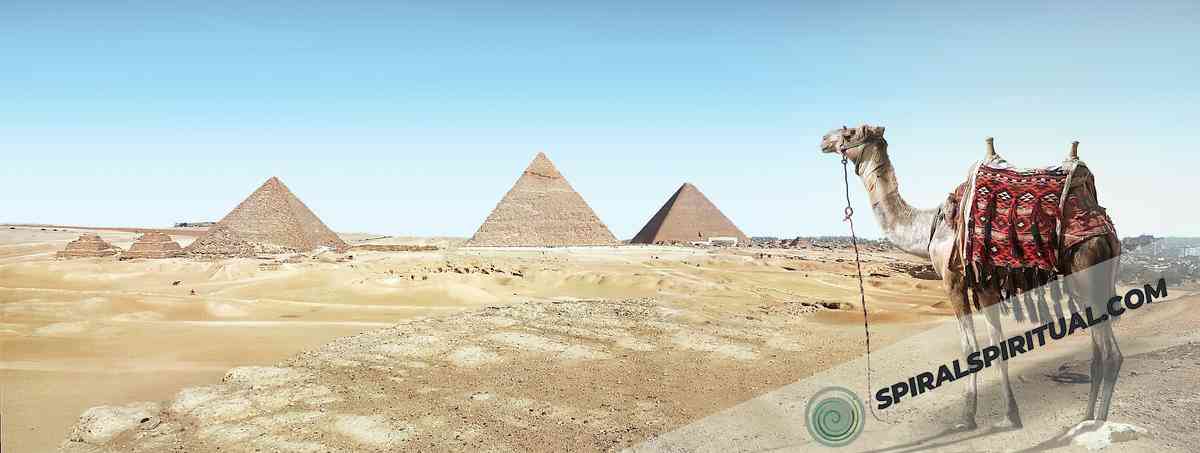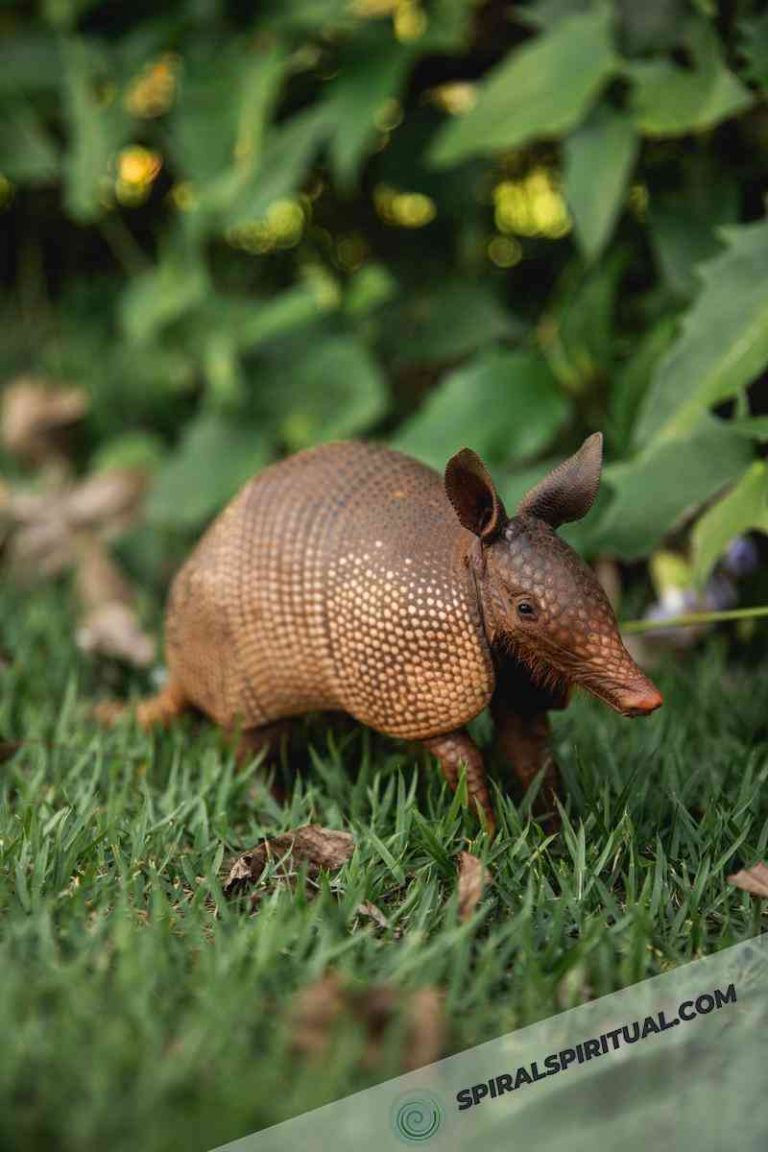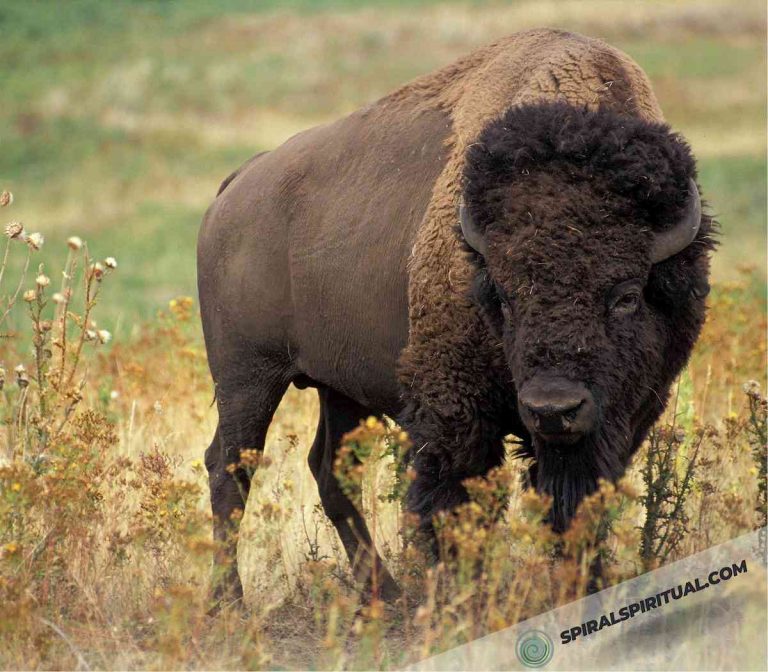Last Updated on February 2024
Camels represent resilience, patience, and ability to endure hard conditions. They can live in places that are very hot and dry. People think camels show that someone can keep going even when times are tough. These meanings come from cultural and religious beliefs about camels. But different cultures may see camels as meaning different things.
5 Spiritual Meanings Behind the Camel
I clearly remember when my friend Emily had a life-changing experience with a camel during her travels. She was in a very hot desert and met some nomads who lived together with camels. Seeing how strong and resilient the camels were in the difficult conditions, she realized they represent the ability to gracefully endure hardships. This made a lasting impression on her. She learned that even when things seem really tough, there is always a way to keep going.
Camels symbolize strength, resilience and perseverance in many cultures and spiritual beliefs. Here are the 5 most common spiritual interpretations of meanings behind the camel:
- Resilience: A camel can live in very hot deserts. This shows it has inner toughness and resilience. So the camel has become a symbol for the strength to handle difficulties, adapt when times are hard, and come through struggles even stronger. The spiritual meaning is that people too can endure challenges and grow from them.
- Patience: Camels are known for being very patient. This highlights the importance of patience for spiritual development. Since camels are calm and composed, they represent the idea that people should try to cultivate patience as they go through their spiritual journeys. Camels remind us to trust that we are growing and developing at the right pace for us.
- Endurance: Because camels can live through tough situations, they have become symbols of being able to get through hard times without giving up hope. They show that spiritual growth often means sticking with something even when it’s difficult or takes a long time. Camels remind us to keep trying with strong determination, even when things don’t go smoothly.
- Adaptability: Camels can adapt very well to their surroundings, even in places that are extremely hot or dry. They can still survive and thrive. When camels represent spiritual meanings, this shows the importance of being flexible in our beliefs and practices. It reminds us to be open to change, transitions in life, and new perspectives. We should aim to adjust to new situations rather than resist them. This kind of adaptability helps us on our spiritual paths.
- Guiding and Nurturing: In some spiritual views, camels represent a guide that leads people through difficult situations or symbolize care and nourishment. This shows how camels can be seen as spiritual companions. They guide seekers on their life paths and provide help and sustenance when people are going through major spiritual changes. The camel offers protection and nurturing to get through challenging times.
The Symbolism of Camel in Different Cultures
Different cultures and religions have different symbolic meanings for camels based on their beliefs and experiences:
- In Arab cultures, camels are very important for travel, surviving in the desert, and the Bedouin lifestyle. They represent strength, wealth, and hospitality in Islamic traditions.
- In Hindu stories, camels are connected to Varuna, the water god. This shows camels can endure long, difficult journeys in search of enlightenment.
- Some Native American tribes see camels as resourceful, adaptable, and good at navigating tough terrain.
- In Chinese symbolism, camels mean long life, good luck, and success in business.
These varying interpretations come from each culture’s unique perspective over history. But it’s important to note different groups may see camel symbolism differently. Looking at cultural records and beliefs allows us to understand the diverse symbolic meanings of camels across societies.
Camel Color
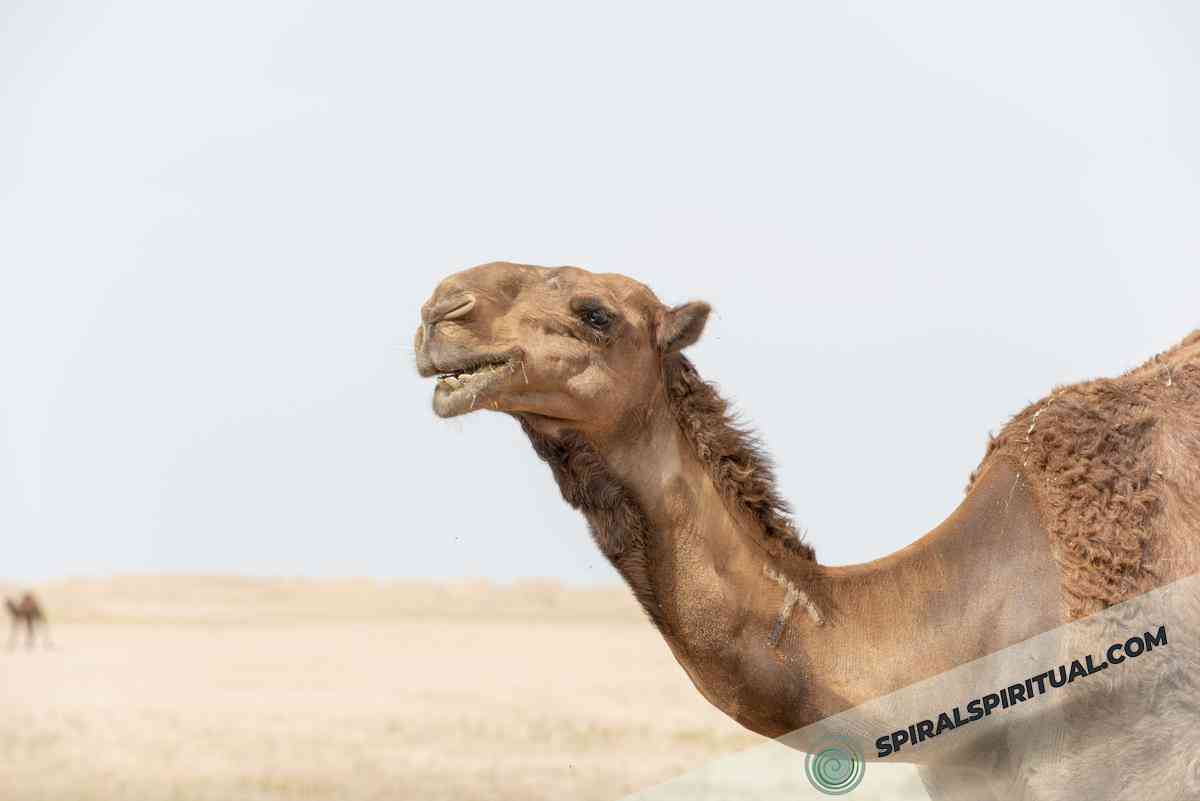
Camels have long played a significant role in various cultures and religions, and their color often carries symbolic and spiritual meanings. The colors associated with camels can vary, but some of the most commonly mentioned ones convey a range of symbolisms.
| Colors | Symbolism |
|---|---|
| Brown | The color brown is often associated with earth, stability, and reliability. It represents a connection to the natural world and the ability to withstand challenges. |
| White | White is a color that often symbolizes purity, innocence, and cleanliness. It is associated with light, goodness, and spiritual awakening. |
| Red | Red is a color commonly associated with vitality, energy, and passion. It can represent fire, power, and intensity. |
| Black | The color black tends to symbolize mystery, the unknown, and the hidden. It is often connected to darkness, the unconscious, and the secrets of the universe. |
| Grey | Grey is a color that represents neutrality, balance, and wisdom. It signifies the ability to see different perspectives and find harmony in conflicting situations. |
| Tan | Tan is a color associated with warmth, comfort, and approachability. It represents a sense of stability, reliability, and groundedness. |
Is the Camel a Good Omen?
People sometimes have camels as pets because they think camels represent good luck and prosperity. The idea that camels are a good omen goes back to their importance in many cultures throughout history. Some people believe that having a camel pet will bring positive energy, protect them from bad things, and draw good fortune into their lives. These spiritual beliefs about camels continue today. They create a close relationship between humans and camels as pets or companions that spread auspicious energy. It shows how some view camels as cute friends that also keep their homes feeling lucky.
If They’re Appearing in Your Dreams
Dreams featuring camels can hold various meanings and interpretations. According to dream analysis experts, camels are often associated with stability, adaptability, and finding balance in life.
The camel represents the element of water in the desert—an interesting symbol of the unconscious that carries a powerful cargo.
– Dr. Carl Jung
This quote by renowned dream psychologist Dr. Carl Jung emphasizes the significance of camels in dreams as a symbol of the unconscious and its hidden contents. Camels may represent untapped emotions, hidden desires, or the need for self-reflection.
While the interpretation of dreams is subjective, exploring the potential symbolism of camels in dreams can provide insights into one’s emotional landscape and life journey.
If You See a Dead Camel
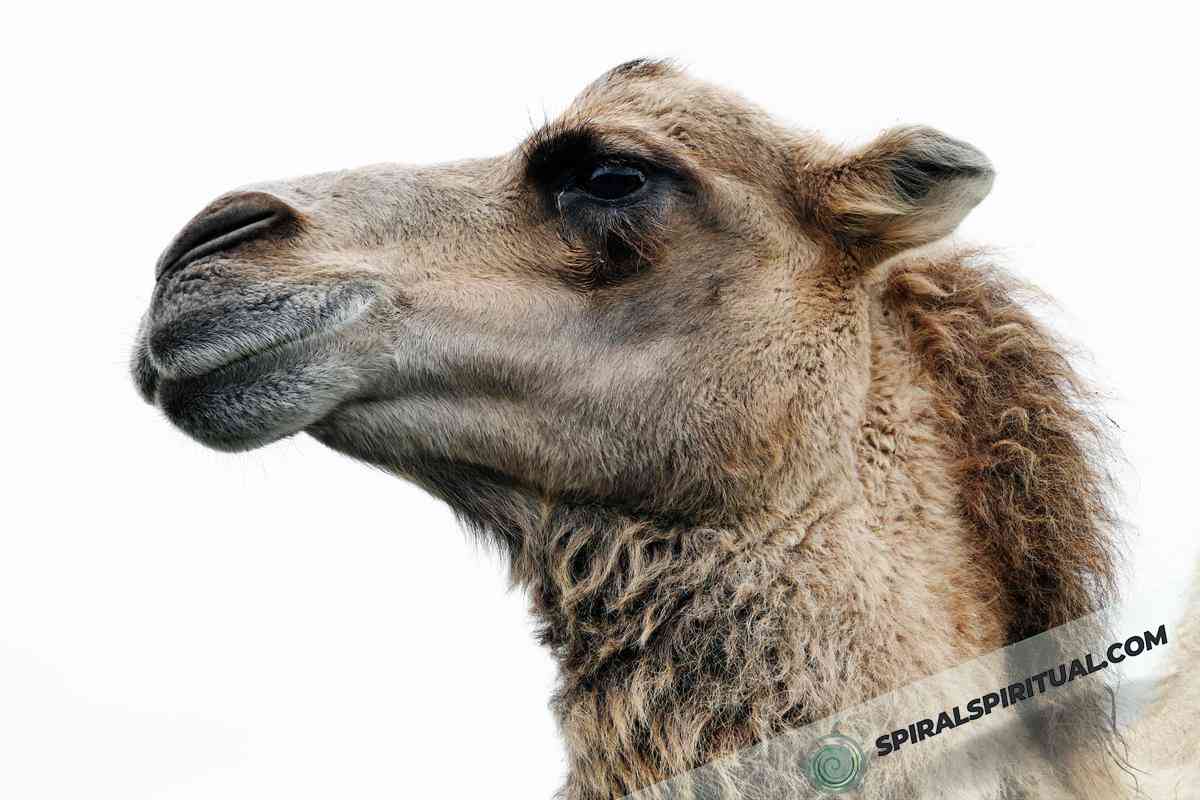
If you dream about a dead camel, it can mean the end of an important life phase, or losing resilience and adaptability. Dream experts say a dead camel shows a loss of these qualities and can mean feeling too overwhelmed by your problems or unable to deal with tough situations. It may signal a need to look inward and reflect on how to conquer the challenges you’re facing.
Although dreams have personal meanings, seeing a dead camel may tell you to evaluate your resilience and ability to adjust to change when awake. It’s a sign to assess how you handle hard times.
Rounding it Up
In exploration of the spiritual symbolism of camels, we have uncovered their significance across cultures, their colors’ meanings, and their appearances in dreams. As a symbol of endurance, adaptability, and deep-rooted wisdom, camels serve as powerful spiritual messengers.
- Across Cultures: Camels hold symbolic importance in various cultures, representing attributes such as resilience, resourcefulness, and the ability to navigate challenging terrains.
- Color Meanings: Different camel colors carry symbolic associations, ranging from the stability of brown to the purity of white and the intensity of red.
- Dream Interpretations: Dreaming of camels can indicate resilience, adaptability, or the need for self-reflection in overcoming obstacles.
References
Here is the literature that was used for writing this article:
- “Animals Divine Companion: Exploring the Spirituality of Relationship Between Human and Animals” by Carolyn Baker, published by North Atlantic Books.
- “The Symbolic Meaning of Animals in Scripture, Art and Literature” by Joan P. Nuth, published by Crossroad Publishing Company.
- “Animal-Speak: The Spiritual & Magical Powers of Creatures Great & Small” by Ted Andrews, published by Llewellyn Publications.
- “The Book of Symbols: Reflections on Archetypal Images” by Archive for Research in Archetypal Symbolism (ARAS), published by Taschen.
